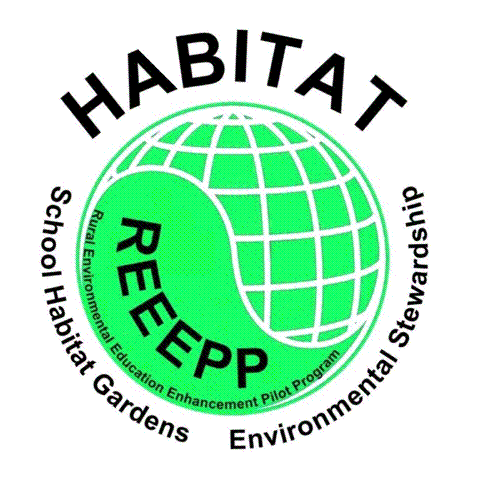Applied Geography formerly Rural Training Center, Thailand
WILD LIFE HABITATS

WHY HABITATS FOR WILDLIFE?
The world and most of its plants and animals were here long before us. Humans, with their culture and technology, have a profound impact on the natural landscape. Unfortunately, this impact has greatly reduced the areas of natural landscape and destroyed many other plants and animals on Earth. Some plants and animals no longer exist, due to a large part to human impact. If people do not become more effective environmental stewards, we may be the next extinct species.
To build our homes, the land was cleared of the original plants and animals. They lost their home so you could have yours. Other animals traveled through the area on their way to summer or winter homes. They used to stop and rest along the way. But our homes took away their resting and feeding places. This reduction and loss of natural areas has greatly reduced the numbers of many wild plants and animals.
The Rural Training Center-Thailand (RTC-TH) supports the National Wildlife Federation (NWF) to teach people to create and maintain wildlife habitats. This is one way to try to help plants and animals have a place in our lives. We join the NWF and strongly encourage families and communities to garden for wildlife as a means to improve and sustain their neighborhoods and communities. Gardening for wildlife not only improves the environment, it can increase property values, create family learning opportunities, and develop a sense of community and of environmental stewardship. The RTC-TH and NWF will be working on a pilot program with Ban Na Fa Elementary School to promote environmental stewardship and implement various Wildlife Habitat projects in the Ban Na Fa area of Nan Province, Thailand.
BASIC HABITAT PARTS
Every living organism needs a home; a habitat. Some habitats are huge; as big as a mountain (and sometimes even bigger). Some are very small; like a drop of water (and sometimes even smaller). But big or small, all living organisms need these basic four parts in their “home” or habitat:
Space: This is the a place or area in which to live and find water, food, and shelter.
Water: This is an essential part of all live on Earth. Some organisms need less water than others, but no creature or plant on Earth can survive without it.
Food: All living organisms need nutrients to survive, grow, and sustain themselves. The form of “food” varies widely, but green plants form a critical part of the nutrient-energy cycle for all life on Earth.
Shelter: Protection from weather conditions and other creatures is needed, especially for rearing young. Sometimes the shelter is naturally occurring, and other times it is created by the organism itself.
TYPES OF WILDLIFE HABITATS
The National Wildlife Federation has programs for various types of wildlife habitats you can certify.
Backyard Wildlife Habitats® can be made at your home. Even if you only have a balcony, you can make a small habitat. Use the Backyard Wildlife Habitat® link below to learn more this program.
Schoolyard Habitats® can be made at your school. It can be big or small depending on how much space you have. Use the Schoolyard Habitat® link below to learn more this program.
Campus Ecology® Program transforms a college campus into living model of an ecologically sustainable society, and a training center for the next generation of environmental leaders and stewards.
Community Wildlife Habitats® combine many Backyard and Schoolyard habitats, local businesses and organizations. Use the Community Wildlife Habitat® link below to learn more this program.
Corridors are the newest wildlife habitat idea the National Wildlife Federation is working on for certification. This work is in progress, so check the NWF website for future announcements.
We are all residents of Planet Earth. It is our only home. We must all work together to keep it clean. (See the “Our PDFs” section of this website to learn about the Rural Environmental Education Enhancement Pilot Project-----REEEPP---- in Thailand.)
WHAT TO DO?/HOW TO START?
Step 1. Select one or more of the activities below. Use the Wildlife Habitat Related Links at the bottom of this page for more information about the listed topics.
Backyard Wildlife Habitat®
Schoolyard Habitat®
Campus Ecology®
Community Wildlife Habitat®
Step 2. Certify your own Backyard Wildlife Habitat®. This can be your own personal hands-on training program. Once you have done this, consider encouraging a local school to garden for wildlife, too.
Step 3. Talk about your Backyard Wildlife Habitat® with your relatives and friends and get them to make one at their home.
Step 4. Talk with your classmates and teachers to make a Schoolyard Habitat®. If you can get a school to garden for wildlife, consider expanding your efforts to encourage a neighborhood or community to garden for wildlife.
Step 5. Go to community groups and leaders to tell them about your Backyard and Schoolyard Habitats. Get them to make a Community Wildlife Habitat®.
If you need help, contact the RTC-TH or the NWF. Local volunteers can help you in your habitat efforts. It all depends on you.
...AND AFTER ALL THAT...
After experience community-based environmental education in action, consider getting involved in an RTC-TH International community-based environmental education project. Your backyard is your personal training ground. Your neighborhood school and the area of your community expand your experience to a larger area involving more people. Getting involved at an international level is your connection to the world.
Backyard Wildlife Habitat®, Schoolyard Habitat®, and Community Wildlife Habitat® are registered trademarks of the National Wildlife Federation.
Email us
rtc2k5@gmail.com
Wildlife Habitat & Education Links
Backyard Wildlife Habitat Program Information
Schoolyard Habitat Program Information
Campus Ecology Program
Community Wildlife Habitat Program Information


